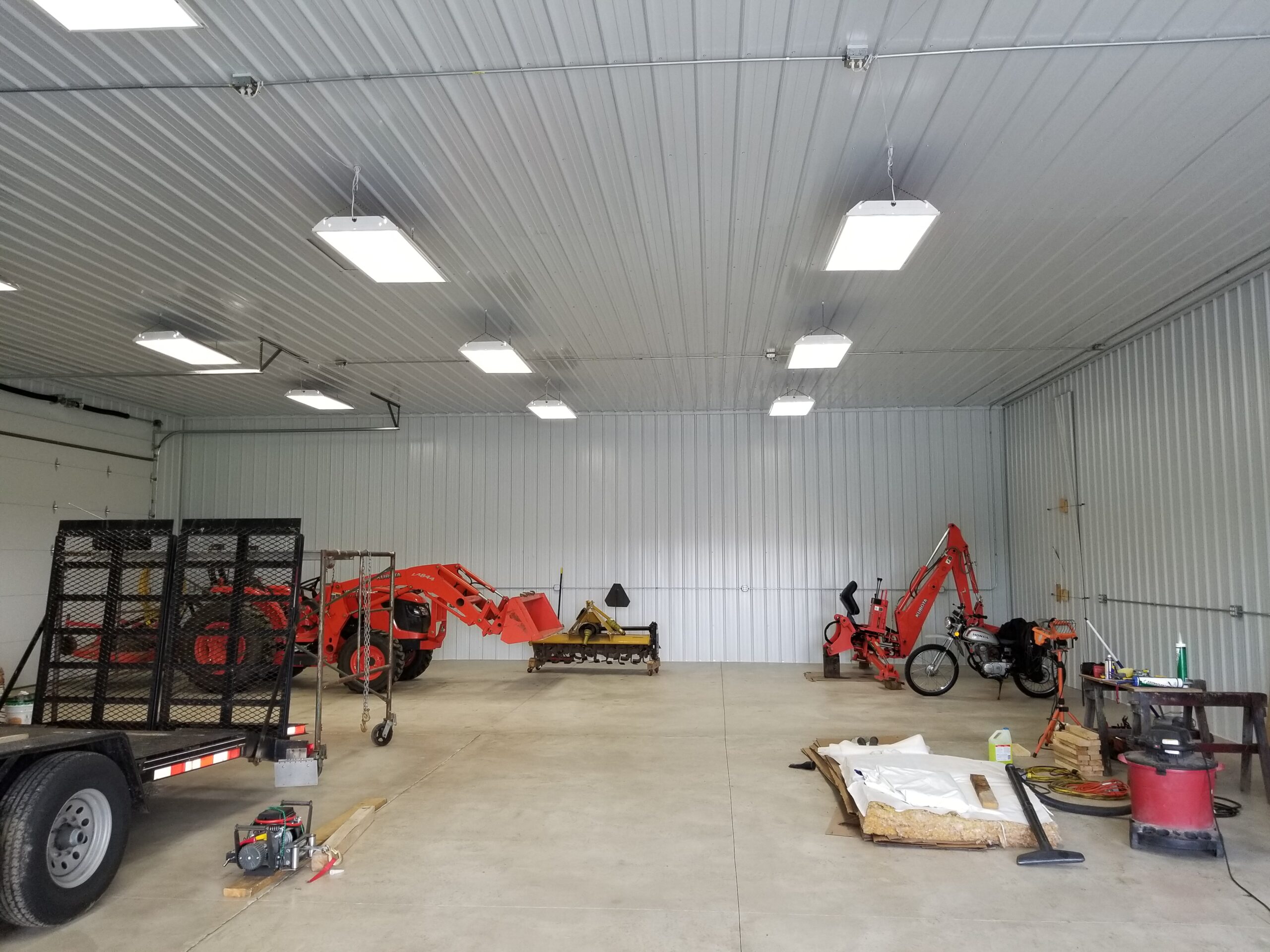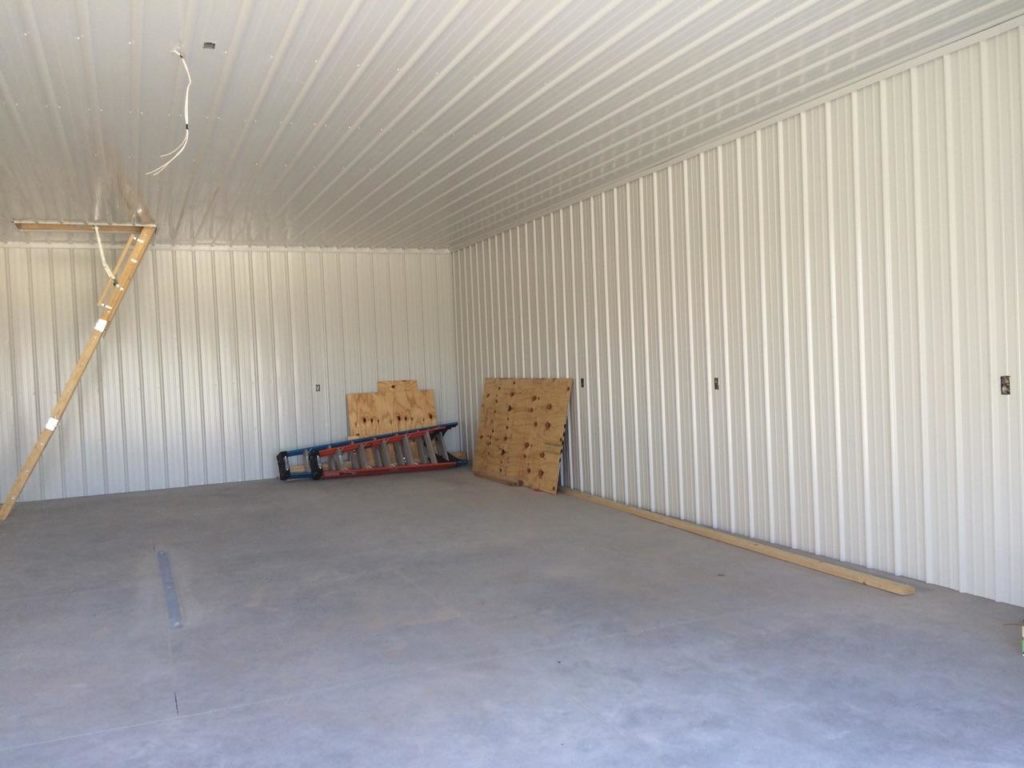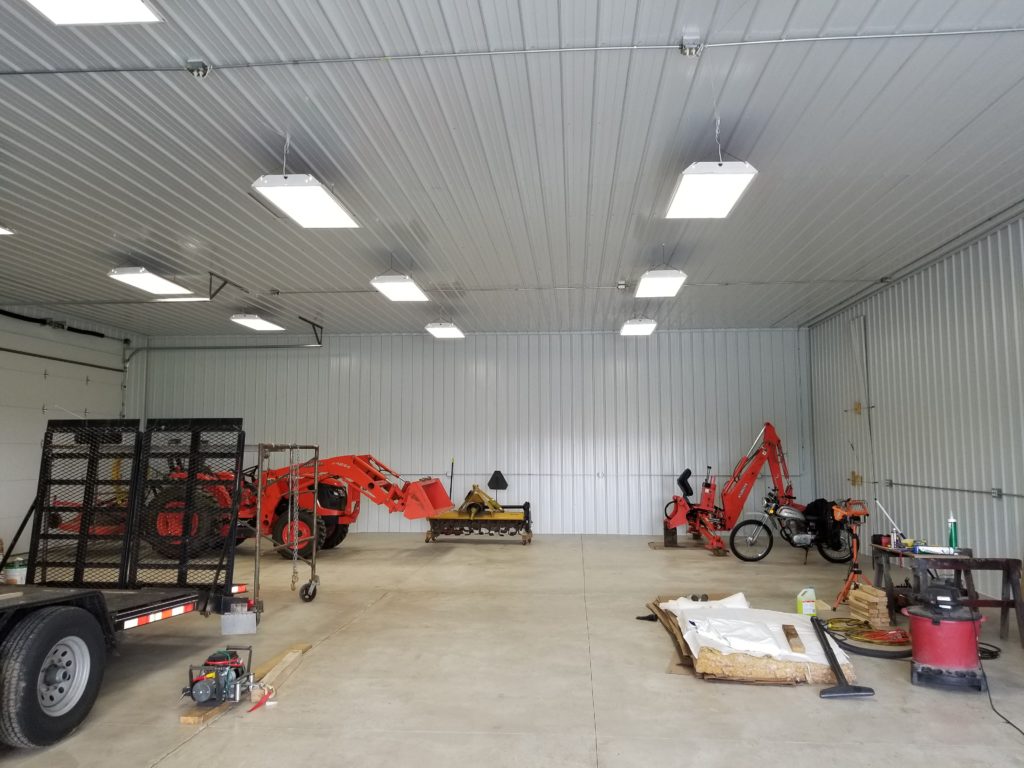
As snow and cold have been hitting the US from Maine to Florida, we hope all are staying warm in their homes. Insulation plays a vital role in keeping your house and pole barn well heated in the winter. If you want to avoid drafts, consider your insulation options.
Be sure the insulation is the correct R-Value. This is based on the area’s climate. If you live in a warmer area the R-Value will be lower, but if you live in a cold climate, the R-Value will be higher. With the right R-Value, you can stay warmer in the winter and cooler in the summer while also saving on energy costs.
Most common types of insulation:
- Blanket batts and rolls
Typically made of fiberglass, blanket batts and rolls are the perfect type of insulation for DIY projects. They are standard size and will fit between wall studs, rafters, and floor joists.
R-Values: 2.9 to 3.8 per inch of thickness while high performance has 3.7 to 4.3 per inch of thickness
WARNING!! Wear gloves, long sleeves, and a face mask while working with fiberglass. (There are other types made from cotton, wood, and plastic fibers.)
Pretty inexpensive, Blanket batt and rolls can be purchased at Lowe’s, Menards, Ace or your local hardware store.
- Spray foam
This is best for sealing leaks or filling gaps in existing walls. The white substance is liquid polyurethane that hardens into solid form.
R-Values: 6.2 per inch (closed cell foam) and 3.7 per inch (open cell foam)
More expensive but can be found at Home Depot, Walmart, and even amazon.com We recommend you use a local spray foam professional company unless you have worked with this type of insulation before. It can be tricky to apply correctly!
- Blown-in insulation
When you have tight spaces or unusual sizes, blown-in insulation may be the best option. A machine blows a material made of fiberglass or rock wool that hardens and conforms to any shape. It is also great for flat ceilings in pole barns to give higher R-values with lower costs.
R-Values: 2.2 to 3.3 per inch of thickness
Blown-in insulation machines are available to rent at Lowe’s, Menards, and Home Depot.
- Foam board
Typically used to insulate the floor or a low sloping roof, but can be used for foundation walls, basement walls, and ceilings. It is made from polyurethane, polystyrene, or polyisocyanurate and formed into boards.
R-Values: 4 to 6.5 per inch *Highest energy reducer*
Also can be purchased at your local hardware store
- Reflective insulation
Mostly used in attics to reflect heat from the sun. Rolls can be foil, plastic, polyethylene bubbles, or cardboard.
Reflective insulation is not measured in R-Values. It is commonly used in a pole barn to stop condensation from forming and dripping into the building and acts as a second layer to seal out the weather similar to Tyvek or plastic sheeting on the walls.
It can be bought at Lowe’s, Menards, or online.
It is important to know that your walls should have an R-Value minimum of 13 and your ceilings should be R38.
Milmar’s Quality Insulation Package:
(Check out our guys installing it on a project by CLICKING HERE)
- Walls
We use Anco Textrafine rolled insulation either un-faced or with white vinyl backing. This insulation is ideal for pole barns as it comes in the perfect width to span the 8′ between posts leave no thermal breaks for cold or hot air to get through. It also is 6″ thick and stands up on its own which fills the wall cavity and keeps the insulation rolls from sagging down over time. The walls can be either left open with 2×4 purlin bracing or be covered with plywood or white ridged metal or a combination of the two.
R-Value: 19
- Ceiling
A blown-in cellulose insulation is used with a white ridged metal ceiling pan attached to the underside of the engineered trusses.
R-Value: 38
Note: Included with all buildings is a rodent guard that serves as a sealant for the ridge metal and to block drafts.
To get your building estimate started today and discuss the many options you have for sealing out the cold/heat click here to contact us today!

